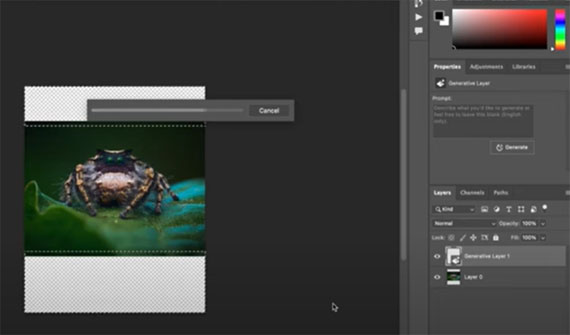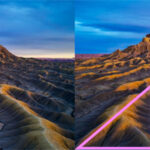Macro photography expert, Stewart Wood, recently shared his experiences of Adobe’s latest piece of AI software in Photoshop, Generative Fill. It is currently in its beta version and is only available within the beta versions of Photoshop. In this article, we’ll dissect the key takeaways from Stewart’s insights about this revolutionary tool and its potential impact on the world of macro photography:
Generative Fill is a new AI tool that uses Adobe’s powerful cloud computing capabilities to perform a multitude of tasks. Rather than getting into the technicalities, Stewart focused on how he has incorporated this tool into his macro photography workflow.
One primary use of Generative Fill, as per Stewart, is to create full-screen crops for Instagram posts. The AI software accomplishes this by extending the background of an image while keeping the main subject intact. This helps to ensure that the entire subject is visible in the post, without having to resort to unsightly cropping methods.
How It Works
Once you have an image ready for cropping, Generative Fill requires you to make selections on the areas to fill. After clicking on ‘Generative Fill’, the software sends the image to the Adobe Cloud, where it gets analyzed. The cloud then generates a suitable background based on the analysis, and sends it back to your computer.
The result is a far more aesthetically pleasing version of your image compared to other methods, such as the ‘stretching’ approach or using a single, solid color as a background.
A Note on Limitations
Stewart points out that the tool, while amazing, has some limitations. For example, if your image is particularly noisy, the Generative Fill may not match the noise level, which can cause a slight difference in the texture between the original and generated areas.
Generative Fill vs Content Aware Fill
In contrast with Adobe’s Content Aware Fill, which works great for minor adjustments, Generative Fill goes the extra mile by not just filling in space, but also creating elements. For instance, it can continue the blurred out part of a leaf that was cut off in the original image, making the result seem more natural.
Ethical Considerations
Stewart raises an important point about the ethical implications of Generative Fill. While some photographers might consider its use as altering the authenticity of an image, Stewart sees it as a tool that enhances his workflow and saves time. Instead of spending precious minutes on cloning and duplication, he now fixes issues within seconds.
However, he urges photographers to maintain their integrity, being clear about whether an image is a composite or not. While he doesn’t consider correcting minor issues as changing the nature of a photograph, adding elements such as textures or additional items does, in his view, turn it into a composite.
Adobe’s Generative Fill is indeed a game changer in the realm of photography editing. It simplifies the process of creating full-screen images for social media, while also offering solutions for fixing issues in stacked images. Its introduction invites photographers to have important discussions about where the line should be drawn between editing and composite creation.
Like This Article?
Don't Miss The Next One!
Join over 100,000 photographers of all experience levels who receive our free photography tips and articles to stay current:







Leave a Reply